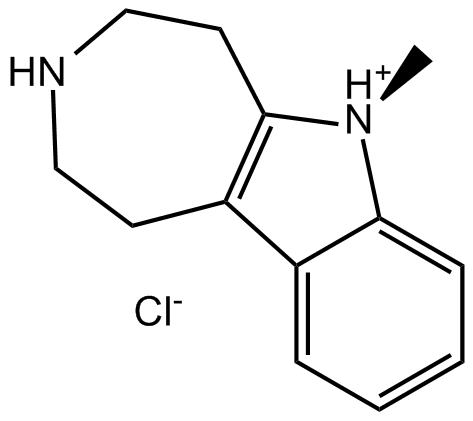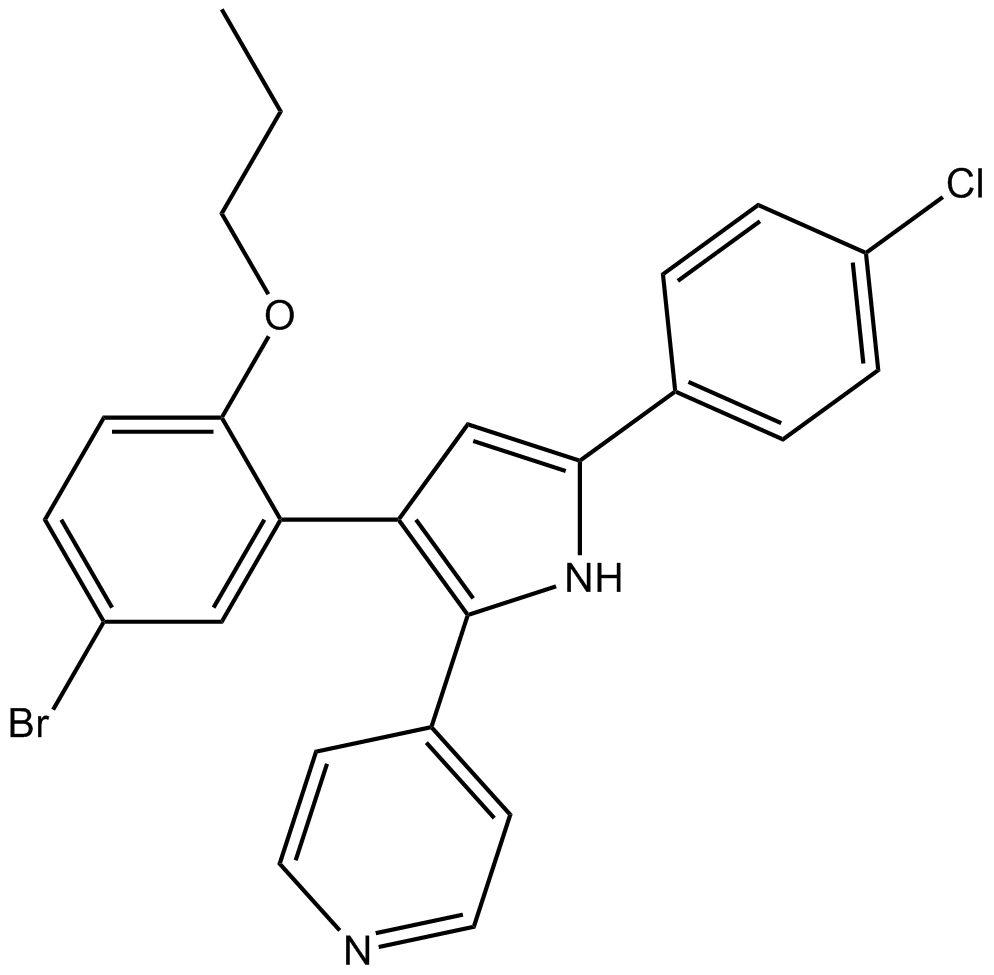GPCR/G protein

All GPCRs share a common seven trans-membrane structure. GPCRs are associated with heterotrimeric G-proteins which are GTP-binding proteins made of alpha, beta, and gamma subunits. When a ligand binds to GPCR, it activates the attached G-protein, the GDP is replaced with GTP. The activated G-protein then dissociates into an alpha and a beta-gamma complex which activates downstream signaling pathways. These intracellular signaling pathways include cAMP/PKA, calcium/NFAT, phospholipase C, protein tyrosine kinases, MAP kinases, PI-3-kinase, nitric oxide/cGMP, Rho, and JAK/STAT.
GPCRs are one of the most important therapeutic targets for various diseases, over 30% of all modern medicinal drugs target this family. Aberrant GPCR functions are involved in pathological conditions such as neurological, immunological and hormonal disorders. A large number of GPCRs have been identified, but whose ligands are not known, are classified as orphan receptors.
-
 B6958 WAY 629 hydrochlorideSummary: 5-HT2C agonist
B6958 WAY 629 hydrochlorideSummary: 5-HT2C agonist -
 B6965 SR 27897Summary: CCK1 receptor antagonist
B6965 SR 27897Summary: CCK1 receptor antagonist -
 B6970 L-755,507Summary: β3 adrenergic receptor agonist
B6970 L-755,507Summary: β3 adrenergic receptor agonist -
 B6971 CGP 71683 hydrochlorideSummary: NPY Y5 receptor antagonist
B6971 CGP 71683 hydrochlorideSummary: NPY Y5 receptor antagonist -
 B6973 PNU 22394 hydrochlorideSummary: 5-HT2C agonist and partial 5-HT2A/5-HT2B agonist
B6973 PNU 22394 hydrochlorideSummary: 5-HT2C agonist and partial 5-HT2A/5-HT2B agonist -
 B6978 LY 255283Summary: BLT2 receptor antagonist
B6978 LY 255283Summary: BLT2 receptor antagonist -
 B6995 SCH 58261Target: Adenosine A2A ReceptorsSummary: A2A adenosine receptor competitive antagonist
B6995 SCH 58261Target: Adenosine A2A ReceptorsSummary: A2A adenosine receptor competitive antagonist -
 B7001 SEW 2871Summary: sphingosine-1-phosphate 1 (S1P1) receptor agonist
B7001 SEW 2871Summary: sphingosine-1-phosphate 1 (S1P1) receptor agonist -
 B7012 SR 142948Summary: neurotensin (NT) receptor antagonist
B7012 SR 142948Summary: neurotensin (NT) receptor antagonist -
 B7014 L-168,049Summary: human glucagon receptor (hGR) antagonist
B7014 L-168,049Summary: human glucagon receptor (hGR) antagonist

